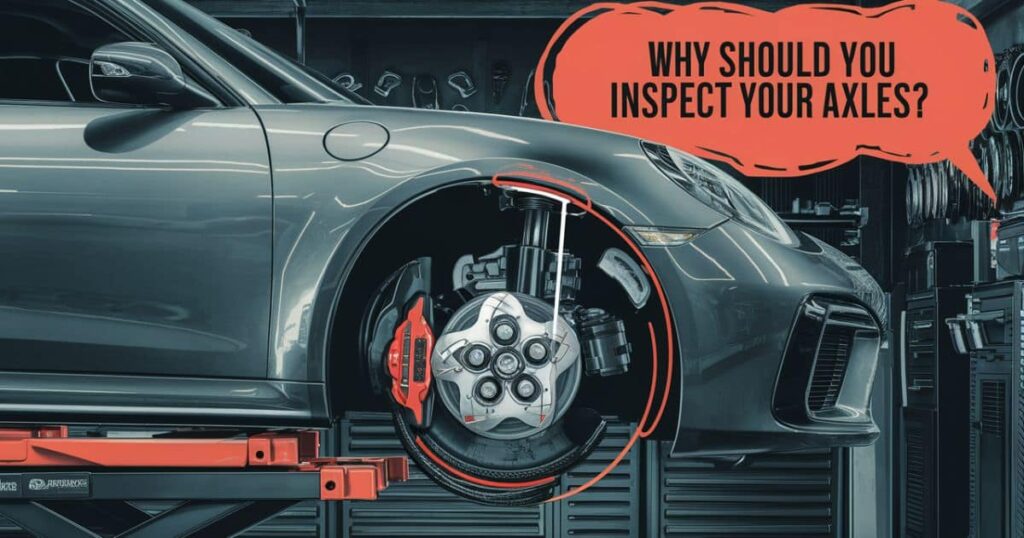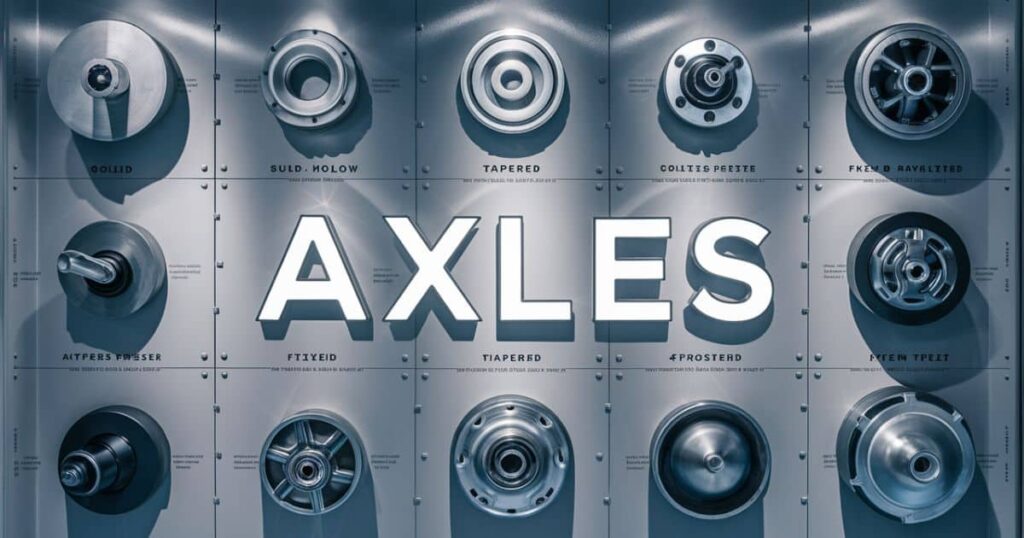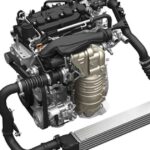If you’ve ever cruised down an open highway or navigated busy city streets, you’ve relied on a crucial component of your vehicle that often goes unnoticed: the car axle. These unsung heroes play a vital role in your car’s performance, safety, and overall functionality.
In this comprehensive guide, we’ll dive deep into the world of car axles, exploring what they are, why they matter, and everything you should know to keep your ride smooth and safe.
What is a car axle?
At its core, a car axle is a central shaft that connects a pair of wheels. It’s responsible for bearing the weight of your vehicle, passengers, and cargo while transmitting power from the engine to the wheels. Think of it as the backbone of your car’s drivetrain system.
Historically, axles were simple solid bars. But as automotive technology evolved, so did axle designs. Today’s car axles are marvels of engineering, incorporating complex systems of gears, bearings, and joints to improve performance and efficiency.
Key components of a modern car axle include:
- Axle shaft: The main rod that transfers power
- Differential: Allows wheels to rotate at different speeds during turns
- CV joints: Enable flexibility in the axle’s movement
- Bearings: Reduce friction and support the axle’s rotation
How many axles does a car have?
Most passenger vehicles have two axles – one in the front and one in the rear. This configuration supports the four wheels typical of standard cars. However, the number of axles can vary based on the vehicle type and its intended use.
| Vehicle Type | Typical Number of Axles |
| Sedan/Coupe | 2 |
| SUV | 2 |
| Pickup Truck | 2-3 |
| Semi-Truck | 3-5 |
| Bus | 2-3 |
Front Axle vs. Rear Axle
While both front and rear axles support the vehicle’s weight and transfer power, they have distinct differences:
- Front Axle:
- Supports the front of the vehicle
- Crucial for steering and absorbing road shocks
- Often incorporates CV joints for flexibility
- Rear Axle:
- Typically bears more weight
- In rear-wheel-drive vehicles, it’s the primary power transmitter
- Often simpler in design compared to front axles
Together, these axles work in harmony to provide stability, control, and power distribution throughout your vehicle.
Why should you inspect your axles?

Regular axle inspections are crucial for several reasons:
- Safety: Damaged axles can lead to loss of vehicle control.
- Performance: Well-maintained axles ensure smooth power transfer and handling.
- Fuel Efficiency: Properly aligned axles reduce drag and improve fuel economy.
- Cost Savings: Catching issues early prevents more expensive repairs down the road.
“An ounce of prevention is worth a pound of cure.” – Benjamin Franklin
This sage advice applies perfectly to axle maintenance. Regular inspections can save you from costly repairs and potentially dangerous situations on the road.
Who should inspect your axle and how often?
While basic visual inspections can be done at home, it’s best to have a professional mechanic thoroughly check your axles. Here’s a breakdown of inspection frequency:
- DIY Checks: Monthly visual inspections for signs of damage or leaks
- Professional Inspections: Every 60,000 miles or as recommended by your vehicle’s manufacturer
- After Incidents: Any time you hit a large pothole or curb
For DIY enthusiasts, here’s a simple checklist:
- Check for visible cracks or bends in the axle
- Look for grease leaks around the boots
- Listen for clicking noises when turning
- Pay attention to vibrations while driving
Are axles covered by insurance?
The coverage of axle damage in insurance policies can be a bit tricky. Generally:
- Collision Coverage: May cover axle damage from accidents
- Comprehensive Coverage: Might cover damage from non-collision incidents (e.g., flooding)
- Warranty: New vehicles often have axle coverage in their warranty
However, normal wear and tear typically isn’t covered. It’s always best to check your specific policy and consider additional coverage if you’re concerned about potential axle issues.
Read More:
How Much Does Car Insurance Cost In Costa Rica?
Types of Axles

Understanding the different types of axles can help you better appreciate your vehicle’s engineering. Let’s explore the main types:
Rear-axle
Rear axles are crucial in rear-wheel-drive vehicles. They come in two main types:
- Live Rear Axle: Connected directly to the differential
- Dead Rear Axle: Doesn’t transmit power, just supports vehicle weight
Maintenance Tip: Check rear axle fluid levels regularly to prevent overheating and wear.
Front axle
Front axles are designed to support the front of the vehicle and assist with steering. They’re typically split into two halves connected by the steering center link.
Key Feature: Front axles often use constant velocity (CV) joints to maintain smooth power transfer during steering.
Stub axle
Stub axles are short shafts used to mount wheels in independent suspension systems. They’re connected to the main axle through CV joints or universal joints.
Advantage: Allows for better handling and a smoother ride, especially in rough terrain.
What Is Considered a 2-Axle Vehicle?
A 2-axle vehicle is any vehicle supported by two axles, typically one in the front and one in the rear. This category includes:
- Passenger cars
- Light trucks
- Some SUVs
- Motorcycles (though the configuration is different)
Fun Fact: The term “2-axle” is often used in toll road pricing and vehicle classification systems.
What Are Floating Axles?
Floating axles are a clever design that allows the axle shaft to “float” and not bear the vehicle’s weight directly. This design is primarily used in rear axles and comes in three main types:
Semi-Floating Axles
- Most common in passenger vehicles
- Axle shaft bears some of the vehicle’s weight
- Simpler and lighter than full-floating designs
Full-Floating Axles
- Used in heavy-duty vehicles
- Axle shaft only transmits power, doesn’t bear weight
- Allows for easier maintenance and greater load capacity
Three-Quarter Floating Axle
- A compromise between semi and full-floating designs
- Axle shaft bears some weight but less than semi-floating
- Offers better strength than semi-floating without the complexity of full-floating
What is a 4-axle vehicle?
4-axle vehicles are typically large commercial trucks or specialized heavy equipment. These vehicles have:
- Two axles in the front (for steering and weight distribution)
- Two axles in the rear (for power and load-bearing)
Common Examples:
- Cement mixers
- Some fire trucks
- Large delivery trucks
The additional axles allow these vehicles to carry heavier loads and distribute weight more evenly, reducing road damage.
What is a single-axle vehicle?
Single-axle vehicles are less common but still serve specific purposes. They typically have:
- One axle connecting two wheels
- A simpler drivetrain system
Examples:
- Some motorcycles
- Certain types of trailers
- Specialized industrial equipment
While less stable than multi-axle vehicles, single-axle designs can offer advantages in maneuverability and simplicity for specific applications.
How many axles does a 4-wheel drive have?
Despite the name, most 4-wheel drive (4WD) vehicles still have two axles. The “4-wheel” refers to power being sent to all four wheels, not the number of axles. However, the axle system in 4WD vehicles is more complex:
- Front and rear axles are both powered
- A transfer case distributes power between the axles
- Locking differentials may be present for improved off-road performance
4WD Axle Fun Fact: Some extreme off-road vehicles use portal axles, which raise the differential and axles for better ground clearance.
What is a 3-axle vehicle?
3-axle vehicles bridge the gap between standard passenger vehicles and heavy commercial trucks. They typically feature:
- One front axle for steering
- Two rear axles for increased load capacity
Common 3-Axle Vehicles:
- Some larger RVs
- Medium-duty trucks
- Certain bus designs
The additional axle allows for better weight distribution, increased payload capacity, and improved stability under heavy loads.
Also Read:
Tragic Brittany Johns Car Accident: A Wake-Up Call For Road Safety
Frequently Ask Question
Does a car have 1 or 2 axles?
Most cars have 2 axles, one for the front wheels and one for the rear wheels.
Do cars have 4 axles?
Standard cars do not have 4 axles; they typically have 2.
How many axles does a 4 wheel drive have?
4-wheel drive vehicle usually has 2 axles, the same as standard cars.
What cars have 3 axles?
Some large trucks and specialized vehicles have 3 axles for additional support and capacity.
What is a 5 axle vehicle?
5-axle vehicle is typically a large commercial truck, such as a tractor-trailer or semi-truck.
Does a car have 2 CV axles?
Yes, most front-wheel-drive and all-wheel-drive cars have 2 CV axles, one for each front wheel.
Final Thought
Car axles are the unsung heroes of our vehicles, quietly ensuring our safety and performance on the road. From the simple two-axle setup of your daily driver to the complex multi-axle systems of commercial trucks, these components play a crucial role in automotive engineering.
By understanding the basics of axle types, maintenance, and potential issues, you can better appreciate and care for this vital part of your vehicle. Remember, a little attention to your axles can go a long way in ensuring a smooth, safe, and efficient ride for years to come.







